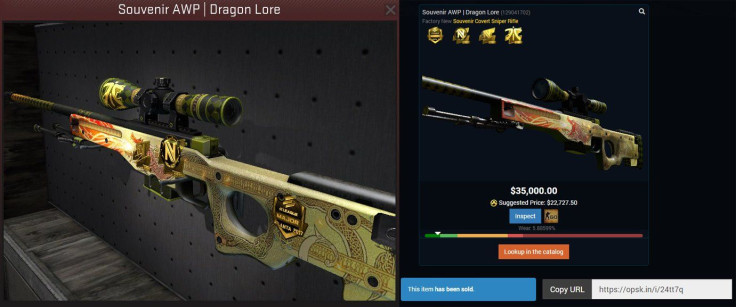Parents used to worry about kids wasting their money on baseball cards and comic books, but in the 21st century there’s a new craze: video game cosmetics. They can be as tiny as an antennae topper for your car in Rocket League or a full makeover for your favorite character in DOTA II or League Of Legends. Some games sell cosmetics a la carte, but others prey on our lizard brain’s constant need for rewards with an addicting system of Loot Crates, Hextech Chests or whatever your favorite game calls them. You spend real world money on a box, which could be filled with rare and exotic items but is usually common garbage. But, that chance to pull something unique keeps you spending more. Virtual cosmetics are a $50 billion industry with more than 200 million users. And it keeps growing.
Counter-Strike is a team-based, military shooter that’s changed very little since it was released nearly two decades ago. It’s newest incarnation, Counter-Strike: Global Offensive, allows players to unlock containers full of tradeable skins and stickers for weapons like the AK-47 and Dual Berettas. This puts a real world monetary value on these virtual knives and rifles, making some extremely rare objects worth thousands of real world dollars.
“Our website is a marketplace that allows buyers and sellers to come together and to either acquire or sell a skin to anyone around the world,” said William Quigley, CEO of Opskins.com. With buyers and sellers in over 100 countries, dealing with dozens of currencies (including bitcoin), OPSkins is one of the largest trading websites for games like CS:GO, H1Z1 and PlayerUnknown’s Battle Grounds.
Before the creation of OPSkins, players would often do business on their own with no guarantees they wouldn’t get ripped off by total strangers who would take their money and disappear forever. “We are a trusted intermediary, we take the payment from the buyer and the item from the seller and we’re the ones that actually handle the transaction,” Quigley said.
OPSkins might be one of the most well-known, but it’s hardly the only option. Valve, the company that makes CS:GO, has the Steam Community Market, their own virtual bazaar. Players can sell items but only spend their earnings on other Steam games. If you want to use the Steam Community Market to make real-world money, you’re going to have to buy keys for crates and then sell those on OPSkins.

“Steam Community Market is a fine place to buy and sell as well, we’re just offering different features and conveniences,” Quigley said. OPSkins allows you to inspect the weapons you want to buy in a 3-D rendering, allowing potential buyers a chance to get a full look at their purchase. There’s also a clear indicator on what the “wear” is on each weapon. Guns range from Factory New all the way to Battle-Scarred, with cleaner guns commanding a higher price tag.
“Certain colors are considered more desirable because they’re rarer,” Quigley said. A sniper rifle with a roaring dragon the side is going to be worth a lot more than a grey version covered in scratches. A ticker on the side of the gun that counts the amount of kills that it’s acquired over it’s lifetime, called StatTrak (™), alongside stickers commemorating esports events also add value to an item.
The ultimate question is why would anyone spend 300 dollars on a bunch of codified zeroes and ones packaged as a pair of sports gloves? Quigley believes it’s just like precious stones or other fancy things with high price tags: everyone loves to stand out. “People like to express themselves in the real world, with different colors and fashions and so the skin business is just an extension of that,” Quigley said.



















